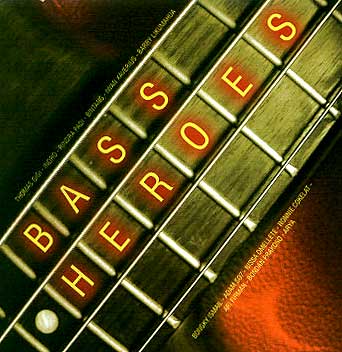Most 12-string bassists use a pick to pick the 12ver life, although there are those who choose to use finger style (in this case but the two octaves are usually hung below the fundamental). Experienced 12-string bassists can manipulate the octave (which is good on the basics) and / or fundamental separately to accent the notes they play, but the most common method is to suppress three separate strings for each note simultaneously.
Do you feel a cramp in his hand was coming? Like most things it is more technique than strength, but until you get used to, he will wear you down faster than the four-string.
Beginning 12-String Basses built as a short (30 to 30.5 ") or Medium (31-32") scale as the effects of stress on the neck by a string octave added. Not until the framework of implementing dual rod, graphite plate / rod that the ability to build a decent 12-string bass longscale realized. There are many supporters of the two scales. As always remains a personal choice / preference. Today all but one (a Hamer B12S 30.5 "Shortscale) from the standard model produced is 34" longscales.
12-string bass guitar sounds like a handful, (and some can) but overall there were few differences that matter. Tuning 12-string is quite simple (although a good color tuner is a must!),. With four fundamental string suitable for concert / pitch standard (E, A, D, G) for each of the two fundamental octave unison tuned an octave higher. (Tuning is two octaves higher will have the impact of disasters in connection with the tension of your neck) It is basically the same configuration tuning with eight-string bass with an extra octave for each group., But it does not sound like that. Sound / tone 12-string bass is much fuller and louder than you expect.
12-string bass guitar. Many know that, but until now few have lived to tell the tale. To understand this concept a great instrument, we need to learn more about its beginnings. Back in 1977, Tom Petersson of Cheap Trick guitar Hamer approached to help develop the 8-string bass to replace Hagstrom 8-string she is currently experimenting with. The Hagstrom is a nightmare to keep up with as a whole and the construction of the playback is not impressive to say the least. As Hamer and Tom collaborate, they began to push the envelope design, and Tom asks if he can build a Hamer 12-string bass in the form of four fundamentals with two each octave (eee, aaa, DDD & GGG). Hamer was skeptical about the concept, but agreed to "test-build" his 10-string bass (EE, aA, DDD & as confirmation that the neck will or will not be able to withstand tension) GGG. To everyone's surprise and fun designs to prove worthy of the task and Hamer went ahead with the construction of the world's first bass guitar 12-string. Since then the 1-string bass guitar has become a force to be reckoned with in the world of bass players.

Introduction
We will give you the opportunity to broaden their knowledge and learning
indirectly and is free as long as you can
follow all the programs that we recommend,
from the current master of the most influential bass instruments.
We share their techniques and unique individual with your knowledge,
aims to develop your skills repertoire, natural agility and smooth music on the bass.
You may already have formal musical training, or even self-taught.
Perhaps you are a midfielder or even a working professional.
But if you recognize the need to develop what you know and serious
desire to control more then come and let your passion,
skills and abilities are challenged to grow from where it now!




